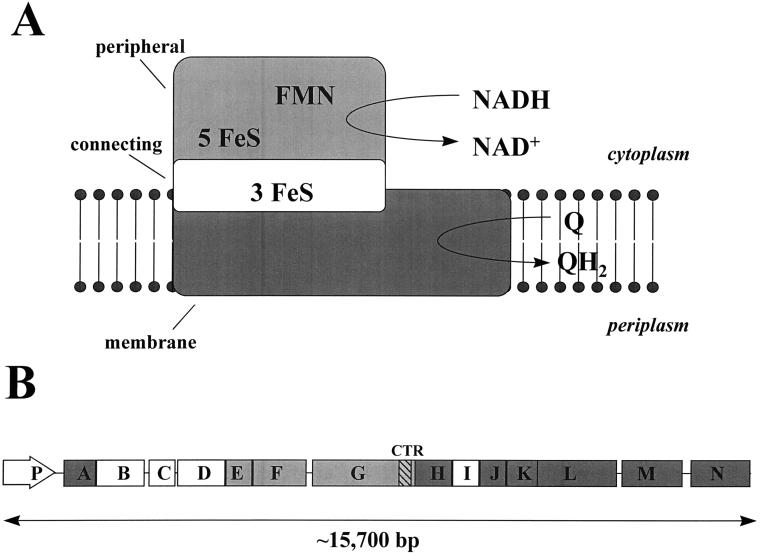FIG. 1.
Schematic of E. coli complex I and the nuo locus. Adapted with permission of the publisher (17, 29, 30, 49). (A) E. coli complex I is comprised of three distinct fragments: the peripheral (light gray), connecting (white), and membrane (dark gray) fragments (17, 29). The peripheral fragment (NDF) is comprised of the nuclear homologs NuoE, -F, and -G and exhibits NADH dehydrogenase activity that oxidizes NADH to NAD+; the connecting fragment is comprised of the nuclear homologs NuoB, -C, -D, and -I; and the membrane fragment is comprised of the mitochondrial homologs NuoA, -H, and -J to -N and catalyzes ubiquinone (Q) to its reduced form (QH2). FMN, flavin mononucleotide. (B) The E. coli nuo locus encodes the 14 Nuo subunits that constitute complex I. The 5′ half of the locus contains a previously identified promoter (nuoP) and the majority of genes that encode the peripheral and connecting subunits (light gray and white, respectively). The 3′ half of the locus contains the majority of the genes encoding the membrane subunits (dark gray). The 3′ end of nuoG encodes a C-Terminal region (CTR) of the NuoG subunit (hatched).

